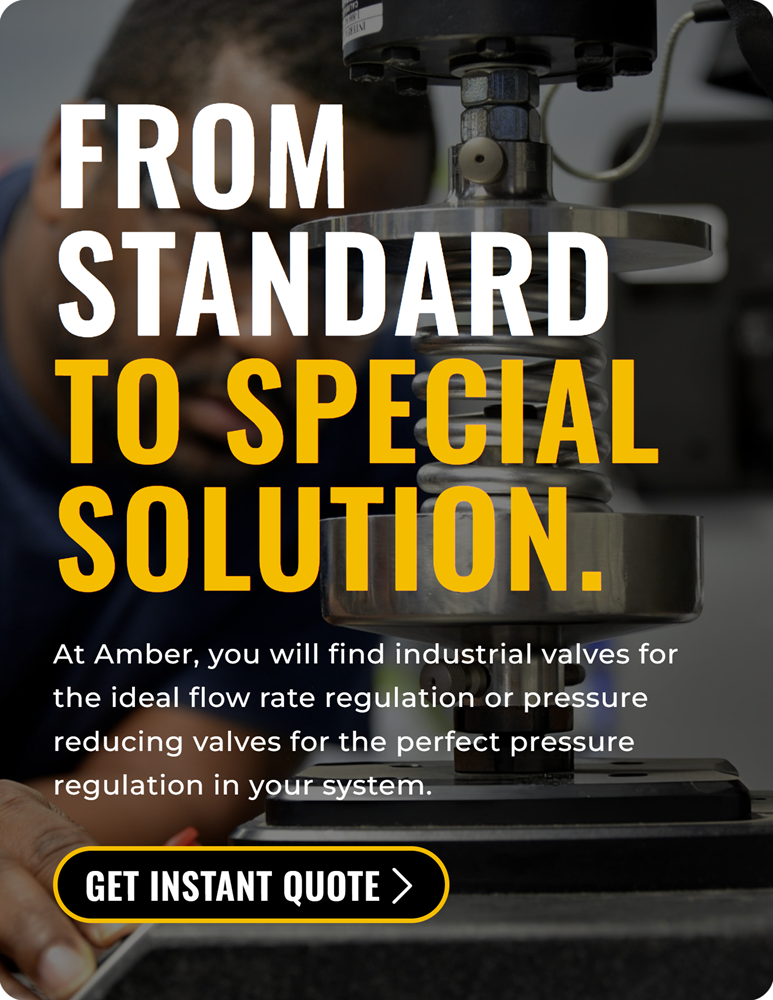Have you noticed water pooling around your water heater? A leaking pressure relief valve might be the culprit. This essential component is designed to prevent excessive pressure buildup in your system, but when it malfunctions, it can lead to costly repairs and property damage.
In this article, we will explore the reasons that why your water heater pressure relief valve leaking or dripping, provide practical solutions to fix it, and offer preventive measures to keep your water heater functioning optimally. Let’s delve into the expert solutions for you!
What is the Water Heater Pressure Relief Valve?
The water heater pressure relief valve, often referred to as a Temperature Pressure Relief Valve (TPR valve), is a critical safety device installed in your plumbing system. Its primary function is to release excess pressure and temperature from the water heater, ensuring the safety and integrity of the system.
When pressure within the tank exceeds safe levels—due to factors like thermal expansion from heating water, high house water pressure, or a malfunctioning expansion tank—the TPR valve opens to release hot water, preventing potential explosions or damage. It’s important to note that when the valve releases water, it may also allow some hot water to flow out of the hot water faucet, which is a normal part of the pressure relief process.

Understanding how this valve works is essential for maintaining a safe home environment. It is typically located near the top of the water heater and is connected to a discharge pipe that directs released water safely away from the tank. Regular inspection of the pressure relief valve and the overall plumbing system is crucial to ensure safety and avoid leaks. By ensuring your hot water faucet operates correctly and monitoring the pressure relief valve, you can help maintain the overall efficiency and safety of your water heating system.
Why is My Water Heater Pressure Relief Valve Leaking?
If you notice water dripping from the pressure relief valve, it’s important to identify the underlying issues causing this leak. Here’s a detailed analysis of the common scenarios that lead to a leaking pressure relief valve.

High Water Pressure
One of the primary reasons for a leaking pressure relief valve is excess pressure within the water heater. Example: Suppose your home’s cold water supply runs at a very high pressure, exceeding the safe limit for your water heater. If the pressure gauge reads above the normal range (typically 50-60 PSI), it indicates that the incoming water pressure is too high. This excess pressure may force the pressure relief valve to open and release water, leading to leaks.
Thermal Expansion
As water heats up, it expands. If your water heater lacks an expansion tank, this thermal expansion can cause pressure to build up inside the tank.
Example: Imagine you have a traditional water heater that heats water to 140°F. When the water heats up, it expands, and if there’s no expansion tank to accommodate this increase, the pressure within the tank can rise significantly. Eventually, this excess pressure might reach the point where the pressure relief valve opens and begins to leak.
Sediment Buildup
Over time, sediment such as minerals and debris can accumulate at the bottom of the water heater tank. This buildup can interfere with the heating process and lead to overheating, which in turn increases pressure.
Example: In areas with hard water, sediment can build up quickly. If you don’t flush your tank regularly, the sediment can cause the heating element to work harder than necessary, leading to localized overheating. This condition can trigger the pressure relief valve to open and leak water.
Faulty Valve
Sometimes, the pressure relief valve itself may be defective or worn out. A faulty valve may fail to close properly after relieving excess pressure, resulting in continuous dripping.
Example: If your pressure relief valve is old or has been subjected to high temperatures and pressures over time, it may become stuck or fail to seal correctly. Even after the pressure normalizes, the valve might still leak, indicating that replacement is necessary.
High Water Temperature
If the water heater is set to a temperature that is too high, it can lead to excessive pressure and cause the valve to leak.
Example: If you set your thermostat to 160°F, the high temperature can create steam and increase pressure within the tank. If this pressure exceeds the valve’s rated limits, it will open to release the excess, resulting in a leak.
Temperature Fluctuations
Frequent temperature fluctuations can also affect water pressure and lead to leaks.
Example: If your water heater frequently cycles between heating and cooling, it can create pressure spikes. For instance, if the heater turns on frequently during high-demand times (like morning showers), the rapid changes in temperature may cause the pressure relief valve to drip intermittently.
Corrosion Inside the Tank
Corrosion can weaken the tank and components over time, leading to leaks.
Example: If your water heater is quite old and has not been maintained properly, internal corrosion can occur. This deterioration may not only affect the tank itself but can also impact the pressure relief valve, leading to leaks as it can no longer maintain a proper seal.
How to Fix the Water Heater Pressure Relief Valve Dripping?
If you notice that your water heater’s pressure relief valve is dripping, it’s essential to address the issue promptly. A dripping valve not only wastes water but can also signal underlying water heater problems. Fortunately, fixing a dripping pressure relief valve is often manageable with the right approach. Below are several effective solutions to tackle this problem.

Check Temperature Settings
One of the first steps in addressing a dripping pressure relief valve is to inspect your water heater’s temperature settings.
-
- Example: If your thermostat is set too high (above 140°F), it can cause excessive pressure levels that lead to a leaking pressure relief valve. Lower the temperature settings to a safer range (120°F to 140°F) to prevent overheating and reduce the likelihood of leaks.
Inspect the Pressure Relief Valve
If adjusting the temperature doesn’t resolve the issue, it’s essential to inspect the pressure relief valve itself.
-
- Example: Look for any visible signs of wear or damage. If the valve appears corroded or has mineral buildup, it may be a faulty pressure relief valve. In this case, replacing it with a new valve is often the best solution. Contact a professional plumber if you’re unsure how to assess the valve.
Install an Expansion Tank
If your water heater lacks an expansion tank, consider having one installed.
-
- Example: An expansion tank helps accommodate the increased volume of water as it heats up, reducing pressure buildup in the system. This can prevent the pressure relief valves from opening unnecessarily and leaking water. A licensed plumber can help you choose the right expansion tank and install it correctly.
Check for Sediment Buildup
Sediment accumulation in your water heater can contribute to overheating and increased pressure.
-
- Example: If you haven’t flushed your tank in a while, it may be time to do so. Flushing the tank helps remove sediment and improves the efficiency of your hot water system. To flush the tank, turn off the power supply, connect a garden hose to the drain valve, and let the water run until it runs clear. This process can prevent issues related to excess pressure and leaking.
Replace the Valve
If the pressure relief valve continues to leak after trying the above solutions, it may be time to replace it.
Example: To replace a bad valve, first, turn off the water supply to the heater. Then, drain some water from the tank to relieve pressure. Unscrew the old valve and replace it with a new one, ensuring it is tightly sealed. If you are not comfortable doing this yourself, consult a professional plumber for assistance.
How to Prevent Water Heater Leaking from Relief Valve?
Preventing leaks from the pressure relief valve is crucial for maintaining the longevity of your water heater. Here are some practical prevention strategies:
-
- Replace Old Valves: If your pressure relief valve is more than a few years old, consider replacing it as a preventive measure. New valves are designed to function more efficiently and are less likely to leak.
-
- Check Thermostat Settings: Ensure your thermostat is functioning correctly and set to appropriate levels to prevent overheating and pressure buildup.
Implementing these preventive measures can significantly reduce the chances of a leaking water heater pressure relief valve, ensuring a safe and efficient hot water system.
Conclusion
Understanding the functions and potential issues related to your water heater pressure relief valve is essential for maintaining a safe home environment. By identifying the causes of leaks, implementing effective solutions, and taking preventive measures, you can keep your water heater running efficiently and safely. For more information or to explore high-quality pressure relief valves, visit Amber Valves. Your safety and comfort are just a click away!
FOLLOW US ON SOCIAL MEDIA
-
- Regular Maintenance: Schedule regular maintenance for your water heater. This includes inspecting the pressure relief valve, flushing the tank, and checking for sediment buildup.
-
- Monitor Water Temperature: Keep an eye on your water temperature settings. Avoid setting it too high to prevent excessive pressure.
-
- Install Pressure Regulators: If your home has high water pressure, consider installing a pressure regulator to maintain safe levels.
-
- Replace Old Valves: If your pressure relief valve is more than a few years old, consider replacing it as a preventive measure. New valves are designed to function more efficiently and are less likely to leak.
-
- Check Thermostat Settings: Ensure your thermostat is functioning correctly and set to appropriate levels to prevent overheating and pressure buildup.
Implementing these preventive measures can significantly reduce the chances of a leaking water heater pressure relief valve, ensuring a safe and efficient hot water system.
Conclusion
Understanding the functions and potential issues related to your water heater pressure relief valve is essential for maintaining a safe home environment. By identifying the causes of leaks, implementing effective solutions, and taking preventive measures, you can keep your water heater running efficiently and safely. For more information or to explore high-quality pressure relief valves, visit Amber Valves. Your safety and comfort are just a click away!


